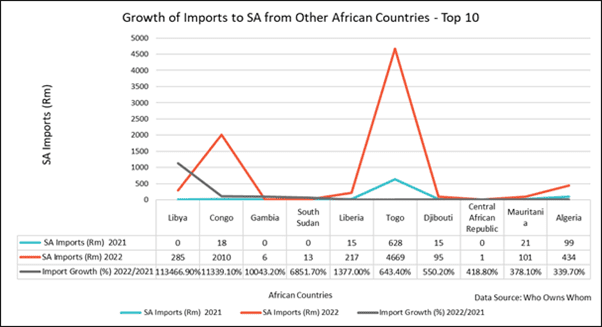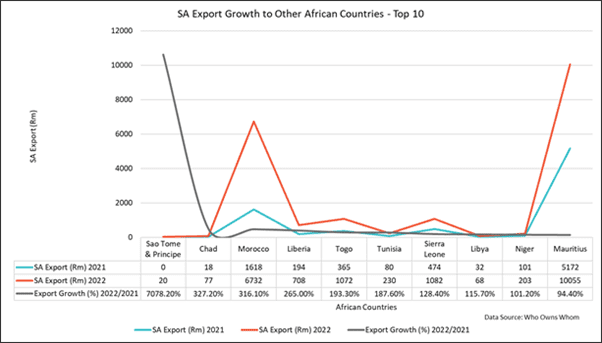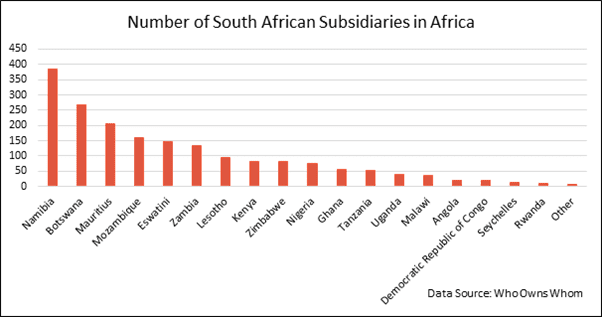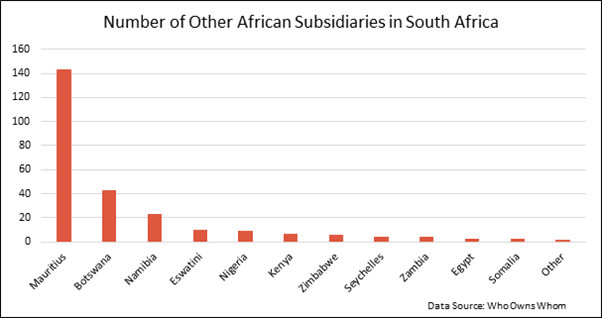Africa Inc. 2024
African Continental Free Trade Area (AfCFTA) secretary general, Wamkele Mene, announced at the recent World Economic Forum in Davos that a further 31 African countries have implemented the agreement, joining the existing seven. AfCFTA has a potential market of 1.3 billion people and should be fully operational by 2030, underscoring Africa’s potential to become a global powerhouse, not in my generation, but certainly in that of my grandchildren. If South Africa is to ride that trajectory, the hard work needs to start now.
The two graphs below reflect the top ten countries in terms of growth of imports and exports between South African and the continent in 2021 and 2022, and they indicate just how much work needs to be done.


South African private sector FDI is already well established in Africa, as can be seen from the table below. The subsequent table shows FDI into South Africa by other African countries. These figures are extracted from the WOW database of 200,000 companies, with FDI defined as a 25% holding or more.
Please note: The tables below are also available showing a breakdown by industry footprint. If that would be useful, please let me know and I will send them to you.


There are eight foreign trade teams attached to their South African-based embassies (six European, Botswana and Brazil) which use WOWEB to map the South African business landscape and identify trade opportunities for companies from their countries. This a practical example of the state assisting the private sector to promote the sale of their goods and services in foreign countries.
In contrast, it was reported by agricultural economist, Wandile Sihlobo, that countries within the South African Customs Union place bans on the import of South African agricultural products without communicating with the South African authorities.
The recent partnering of the state and private sector to resolve self-inflicted problems in power generation, logistics and crime could be extended to an initiative to promote trade with our continental neighbours. The IMF recently projected 4.5% GDP growth for sub-Saharan Africa, with South Africa stumbling behind with less than 1%. If we are to realise our potential standing on the continent, there needs to be a commitment to creating a symbiotic relationship between the state and the private sector.
Contact us to access WOW's quality research on African industries and business
Contact UsRelated Articles
Newsletters
Looking at our own backyard
Our last communication of 2024, I quoted from a book How Rich Countries Got Rich and Why Poor Countries Stay Poor. The author, Erik Reinert, characterises developed country aid to...
Newsletters
Africa Inc. 2024 Part 2
The first Africa Inc. communication sent in April this year mentioned that 38 African countries had signed the African Continental Free Trade Area (AfCFTA) agreement, which has since increased to...
Newsletters
A good year at WOW
Our 2024 financial year concluded at the end of March. It was a demanding year, but in true WOW style, our team embraced the challenges to deliver encouraging results. FY2024...



